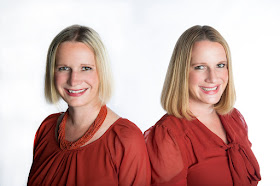 |
| Norwegian kroner, because we had the picture handy. Photo by Judy. |
If you are like most small business owners here in the U.S, in our profession or any other, you are probably quite familiar with quarterly estimated taxes, which are due four times a year. We generally think taxes are a great thing, and that they are one of the main things that make a society work, and we are happy to pay them. But sometimes small businesses run into cash flow issues and occasionally you have to scramble to come up with the estimated tax payment when it's due. It's happened to us, too, and while we have always been able to pay it, we figured we needed an easy way to guarantee the money is there when we need it.
The strategy we started using is quite simple, but one we had only used intermittently before: every time we deposit a check into our checking account or receive a payment via online banking transfer (which they all should be, but we digress), we immediately take 20% of each payment and transfer that into a savings account that's used to pay taxes. The two accounts are with the same bank (Chase, as much as we dislike them at times) and the transfer is quick, easy, and free. Since the money goes out so quickly after it's been deposited, we don't really miss it, and we ware delighted to have it come tax time.
What do you think, dear colleagues? Do you follow a similar strategy?






















6 comments:
I use the same great strategy in an expanded version. I have three different savings accounts, one for taxes, one for retirement and health insurance, and one for my rainy day fund. (The last one is with a different bank, so that I am not tempted to tap into it for non-emergencies.) Whenever I receive a payment from a client, I immediately deposit a specific percentage of that money into each of these three accounts.
@Carola: That is brilliant, dear Carola! We are not surprise that such a fab strategy emerges from that super-smart brain of yours. We particularly like the idea of having the rainy day fund with another bank -- excellent indeed. The transfers are still free to the other bank, we hope? Or do you write yourself an old-school check? Side note: American banking does need to be brought into the 21st century.... thanks for reading and for commenting!
Thanks for the compliment, but the idea to set up multiple savings accounts wasn't mine! I read it somewhere many years ago (sorry, can't remember where). As for the transfers, yes, since they are electronic and within the USA, the transfers to that other bank are free, but take a few days, which is actually helpful so that I'm not tempted to use my rainy day fund to buy yet another bicycle ;-)
This is my first year full year freelancing and paying quarterly, and after some confusion for the first few months of the year—I confused quarterly taxes with state excise taxes and thought I didn't have to pay (because I'm too small of a business to pay the latter)—I started employing this exact tactic: 20% immediately to savings for every check or deposit I receive. Now I just need to get my act together and transition to Carola's expanded version.
All that to say, after my first full freelancing year, this 20% strategy has worked well and it's what I've been recommending to other newbies. Thank you for spreading the tip!
@Carola: Ah, we love it when knowledge is shared and passed around in our profession. So collaborative and fab! Great point that you won't be tempted to shop for another bike while the money transfers. Just did another 20% transfer here and it always feels great! ;)
@Andrew: Many thanks for reading and for leaving a comment here. We are delighted to hear that you are already using this highly effective strategy. And welcome to the world of freelance translation. We hope you are enjoying it. Have you read Corinne McKay's amazing book for newcomers? It's called "How to succeeed as a freelance translator" and it's a must. Ah, funds permitting, we also recommend consulting a CPA to clear up some initial questions. It's been a worthwhile expense for us.
Post a Comment